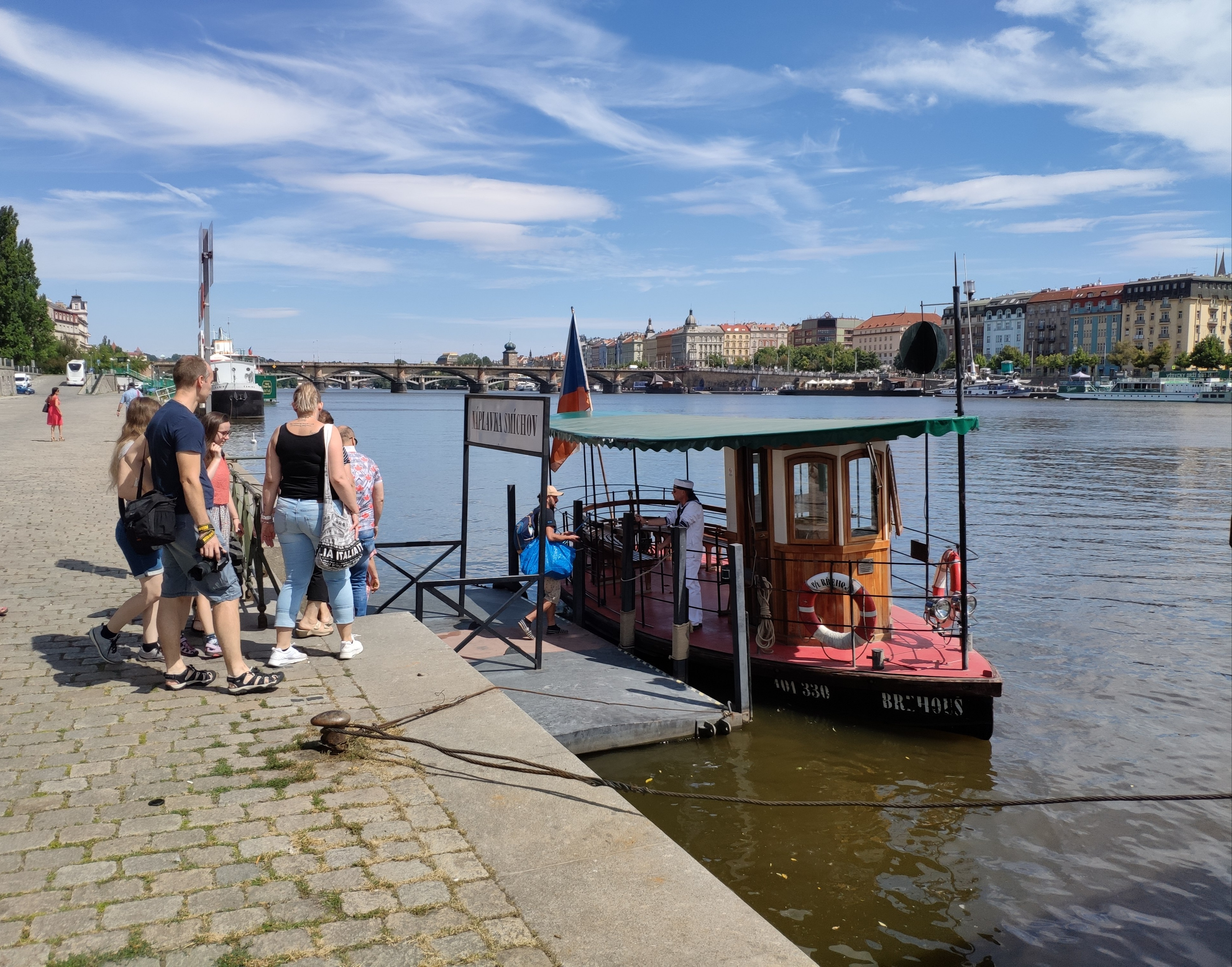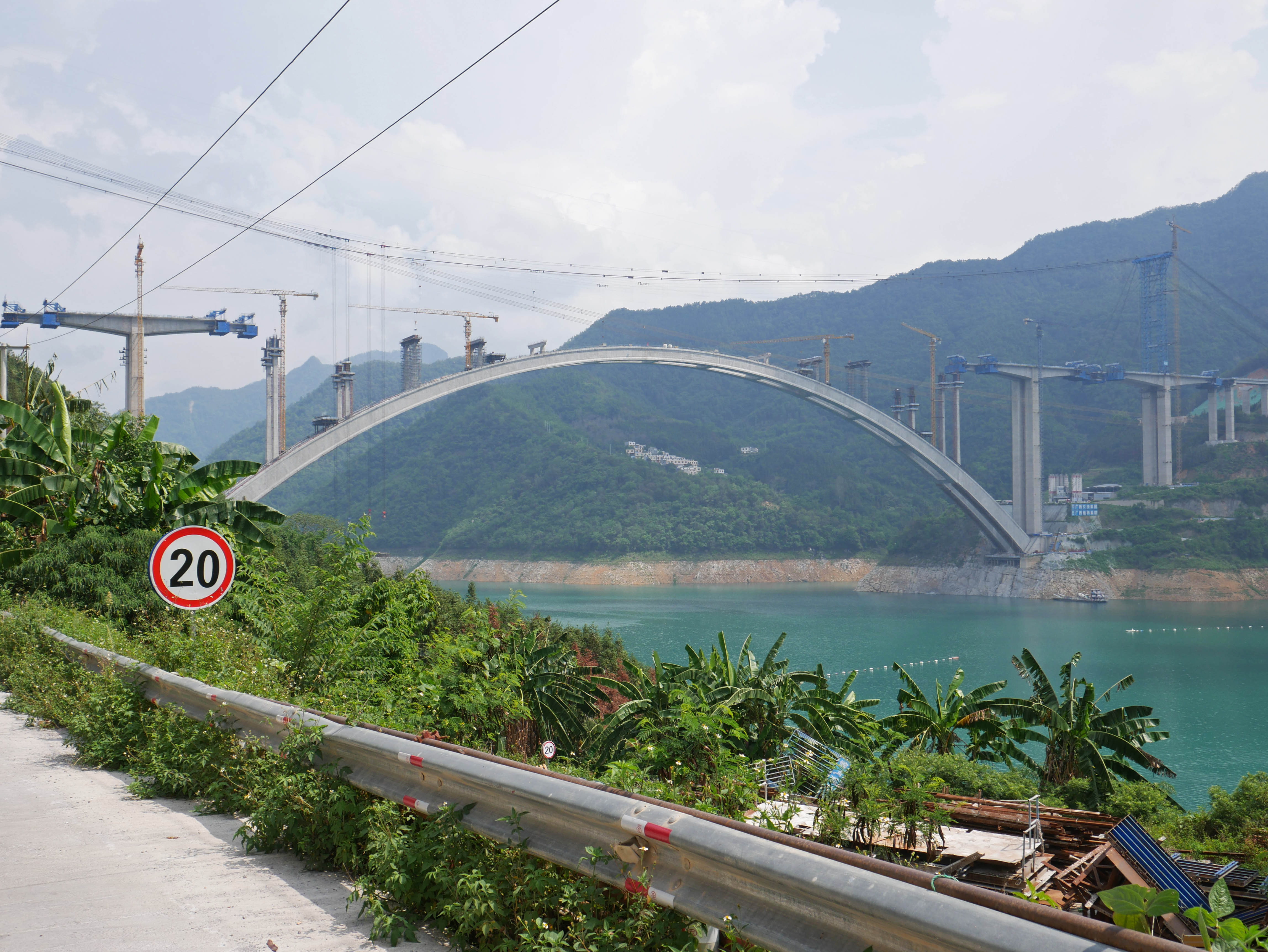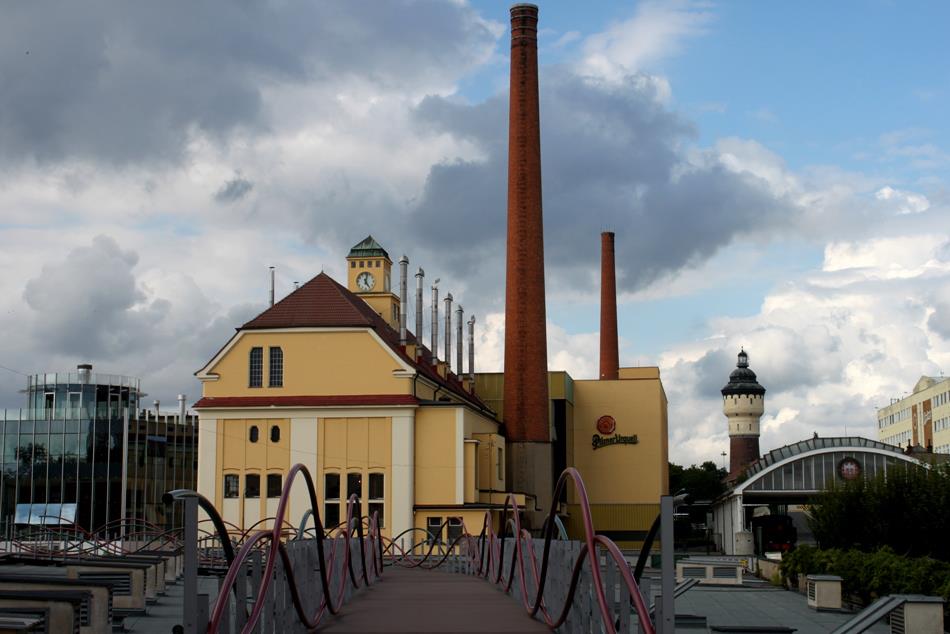|
ĆœÄĂĄkov Bridge
The ĆœÄĂĄkov Bridge is a steel arch bridge that spans the Vltava between OrlĂk nad Vltavou and Kostelec nad Vltavou in PĂsek District, Czech Republic. At the time of its completion in 1967, it was the longest arch bridge in Czechoslovakia and the supported arch bridge with the longest span in the world. It is situated on the road between TĂĄbor and PlzeĆ, near OrlĂk nad Vltavou. The total length of the bridge is , including approach spans. The main span is . Construction of the bridge was started simultaneously with the construction of OrlĂk Dam in 1957. The price of the bridge was 71 million CSK and was completed in 1967. It was named after the nearby village, flooded during the construction of the OrlĂk Dam. In 2001 the bridge was awarded as Bridge of the Century in the category of steel road bridges by Czech engineers during the Mosty 2001 symposium. See also * List of longest arch bridge spans This list of the longest arch bridge spans ranks the world's arch bri ... [...More Info...] [...Related Items...] OR: [Wikipedia] [Google] [Baidu] |
OrlĂk Nad Vltavou
OrlĂk nad Vltavou is a municipality and village in PĂsek District in the South Bohemian Region of the Czech Republic. It has about 300 inhabitants. It is known for the OrlĂk Castle, protected as a national cultural monument. Administrative division OrlĂk nad Vltavou consists of two municipal parts (in brackets population according to the 2021 census): *OrlĂk nad Vltavou (27) *StarĂ© Sedlo (239) Etymology The name is a diminutive of the Czech word ''orel'' (i.e. 'eagle'). OrlĂk was a common name for medieval castles built on a rock, because they resembled an eagle sitting on its nest. Geography OrlĂk nad Vltavou is located about north of PĂsek and southwest of Prague. It lies mostly in the BeneĆĄov Uplands. The highest point is the hill Chlum at above sea level. The municipality lies on the shores of the OrlĂk Reservoir, built on the Vltava River. History The first written mention of OrlĂk is a document from the period 1230â1251, when customs duties were collected ... [...More Info...] [...Related Items...] OR: [Wikipedia] [Google] [Baidu] |
Kostelec Nad Vltavou
Kostelec nad Vltavou is a municipality and village in PĂsek District in the South Bohemian Region of the Czech Republic. It has about 400 inhabitants. Kostelec nad Vltavou lies approximately north of PĂsek, north of ÄeskĂ© BudÄjovice, and south of Prague Prague ( ; ) is the capital and List of cities and towns in the Czech Republic, largest city of the Czech Republic and the historical capital of Bohemia. Prague, located on the Vltava River, has a population of about 1.4 million, while its P .... Administrative division Kostelec nad Vltavou consists of five municipal parts (in brackets population according to the 2021 census): *Kostelec nad Vltavou (208) *PĆĂlepov (55) *SobÄdraĆŸ (77) *ZahrĂĄdka (49) Demographics References External links * Villages in PĂsek District {{SouthBohemia-geo-stub ... [...More Info...] [...Related Items...] OR: [Wikipedia] [Google] [Baidu] |
Arch Bridge
An arch bridge is a bridge with abutments at each end shaped as a curved arch. Arch bridges work by transferring the weight of the bridge and its structural load, loads partially into a horizontal thrust restrained by the abutments at either side, and partially into a vertical load on the arch supports. A viaduct (a long bridge) may be made from a series of arches, although other more economical structures are typically used today. History Possibly the oldest existing arch bridge is the Mycenaean Greece, Mycenaean Arkadiko Bridge in Greece from about 1300 BC. The stone corbel arch bridge is still used by the local populace. The well-preserved Hellenistic Eleutherna Bridge has a triangular corbel arch. The 4th century BC Rhodes Footbridge rests on an early voussoir arch. Although true arches were already known by the Etruscans and ancient Greeks, the Ancient Rome, Romans were – as with the Vault (architecture), vault and the dome – the first to fully realize the ... [...More Info...] [...Related Items...] OR: [Wikipedia] [Google] [Baidu] |
Vltava
The Vltava ( , ; ) is the longest river in the Czech Republic, a left tributary of the Elbe River. It runs southeast along the Bohemian Forest and then north across Bohemia, through ÄeskĂœ Krumlov, ÄeskĂ© BudÄjovice, and Prague. It is commonly referred to as the "Czech national river". Etymology Both the Czech name ' and the German name ' are believed to originate from the old Germanic words ' 'wild water' (compare Latin '). In the ' (872 AD) it is called '; from 1113 AD it is attested as '. In the ' (1125 AD) it is attested for the first time in its Bohemian form, '. Course The Vltava originates by a confluence of two rivers, the TeplĂĄ Vltava, which is longer, and the StudenĂĄ Vltava, originating in Bavaria. From a water management point of view, the Vltava and TeplĂĄ Vltava are one river with single numbering of river kilometres. The TeplĂĄ Vltava originates in the territory of Kvilda in the Bohemian Forest at an elevation of , on the slope of the ÄernĂ ... [...More Info...] [...Related Items...] OR: [Wikipedia] [Google] [Baidu] |
PĂsek District
PĂsek District () is a Okres, district in the South Bohemian Region of the Czech Republic. Its capital is the town of PĂsek. Administrative division PĂsek District is divided into two Districts of the Czech Republic#Municipalities with extended competence, administrative districts of municipalities with extended competence: PĂsek and Milevsko. List of municipalities Towns are marked in bold and market towns in ''italics'': Albrechtice nad Vltavou â ''Bernartice (PĂsek District), Bernartice'' â Borovany (PĂsek District), Borovany â Boudy â BoĆŸetice â Branice â Cerhonice â ChyĆĄky â Äimelice â ÄĂĆŸovĂĄ â Dobev â DolnĂ Novosedly â DraĆŸĂÄ â Drhovle â HeĆmaĆ (PĂsek District), HeĆmaĆ â Horosedly â Hrazany â Hrejkovice â JetÄtice â Jickovice â KestĆany â Kluky (PĂsek District), Kluky â Kostelec nad Vltavou â KovĂĄĆov â KoĆŸlĂ (PĂsek District), KoĆŸlĂ â KrĂĄlova Lhota (PĂsek District), KrĂĄlova Lhota â KĆenovi ... [...More Info...] [...Related Items...] OR: [Wikipedia] [Google] [Baidu] |
Czech Republic
The Czech Republic, also known as Czechia, and historically known as Bohemia, is a landlocked country in Central Europe. The country is bordered by Austria to the south, Germany to the west, Poland to the northeast, and Slovakia to the southeast. The Czech Republic has a hilly landscape that covers an area of with a mostly temperate Humid continental climate, continental and oceanic climate. The capital and largest city is Prague; other major cities and urban areas include Brno, Ostrava, PlzeĆ and Liberec. The Duchy of Bohemia was founded in the late 9th century under Great Moravia. It was formally recognized as an Imperial Estate of the Holy Roman Empire in 1002 and became Kingdom of Bohemia, a kingdom in 1198. Following the Battle of MohĂĄcs in 1526, all of the Lands of the Bohemian Crown were gradually integrated into the Habsburg monarchy. Nearly a hundred years later, the Protestantism, Protestant Bohemian Revolt led to the Thirty Years' War. After the Battle of White ... [...More Info...] [...Related Items...] OR: [Wikipedia] [Google] [Baidu] |
List Of The Largest Arch Bridges
This list of the longest arch bridge spans ranks the world's arch bridges by the length of their main Span (architecture), span. The length of the main span is the most common way to rank bridges as it usually correlates with the engineering complexity involved in designing and constructing the bridge. If one bridge has a longer span than another it does not necessarily mean that the bridge is longer from shore to shore or from abutment to abutment. Completed bridges Notes: CFST is concrete-filled steel tube. Under construction History of largest spans Flags refer to present national boundaries. See also * * * List of longest masonry arch bridge spans * List of spans (list of remarkable permanent wire spans) References * ''Structurae, Structurae.com'', International Database for Civil and Structural Engineering * ''HighestBridges.com'', Sakowski, Eric (Wiki) * Others references Sources * Further reading * {{Bridge footer Arch bridges, * Lists o ... [...More Info...] [...Related Items...] OR: [Wikipedia] [Google] [Baidu] |
TĂĄbor
TĂĄbor (; ) is a town in the South Bohemian Region of the Czech Republic. It has about 34,000 inhabitants, making it the second most populated town in the region. The town was founded by the Hussites in 1420. The historic town centre is well preserved and is protected as an Cultural monument (Czech Republic)#Monument reservations, urban monument reservation. Administrative division TĂĄbor consists of 15 municipal parts (in brackets population according to the 2021 census): *TĂĄbor (25,625) *Äekanice (1,355) *Äelkovice (680) *Hlinice (208) *Horky (1,047) *Klokoty (1,092) *MÄĆĄice (1,759) *NĂĄchod (340) *Smyslov (58) *StoklasnĂĄ Lhota (180) *VÄtrovy (393) *VĆĄechov (37) *ZahrĂĄdka (49) *ZĂĄluĆŸĂ (189) *ZĂĄrybniÄnĂĄ Lhota (348) Etymology Although the town's Czech language, Czech name translates directly to 'camp' or 'encampment', these words were derived from the TĂĄbor's name, and the town was named after the biblical Mount Tabor located in Israel. The town also gave its na ... [...More Info...] [...Related Items...] OR: [Wikipedia] [Google] [Baidu] |
PlzeĆ
PlzeĆ (), also known in English and German as Pilsen (), is a city in the Czech Republic. It is the Statutory city (Czech Republic), fourth most populous city in the Czech Republic with about 188,000 inhabitants. It is located about west of Prague, at the confluence of four rivers: MĆŸe, Ăhlava, Ăslava and Radbuza, together forming the Berounka River. Founded as a royal city in the late 13th century, PlzeĆ became an important town for trade on routes linking Bohemia with Bavaria. By the 14th century it had grown to be the third largest city in Bohemia. The city was besieged three times during the 15th-century Hussite Wars, when it became a centre of resistance against the Hussites. During the Thirty Years' War in the early 17th century the city was temporarily occupied after the Siege of PlzeĆ. In the 19th century, the city rapidly industrialised and became home to the Ć koda Works, which became one of the most important engineering companies in Austria-Hungary and later ... [...More Info...] [...Related Items...] OR: [Wikipedia] [Google] [Baidu] |
OrlĂk Dam
OrlĂk may refer to: * Orlican VT-16 OrlĂk, Czechoslovakian glider of 1959 * OrlĂk nad Vltavou, a municipality and village in the Czech Republic ** OrlĂk Reservoir ** OrlĂk Castle * 11339 OrlĂk, an asteroid * OrlĂk (band), a former Czech band * OrlĂk, mountain in the Czech Republic People * Emil OrlĂk (1870â1932), Czech painter, etcher and lithographer See also * Orlik (other) (equivalent word in Polish and other Slavic languages) {{DEFAULTSORT:Orlik ... [...More Info...] [...Related Items...] OR: [Wikipedia] [Google] [Baidu] |
Czechoslovak Koruna
The Czechoslovak koruna (in Czech and Slovak: ''koruna ÄeskoslovenskĂĄ'', at times ''koruna Äesko-slovenskĂĄ''; ''koruna'' means ''crown'') was the currency of Czechoslovakia from 10 April 1919 to 14 March 1939, and from 1 November 1945 to 7 February 1993. For a brief time in 1939 and again in 1993, it was also the currency of both the separate Czech Republic and Slovakia. On 8 February 1993, it was replaced by the Czech koruna and the Slovak koruna, both at par. The (last) ISO 4217 code and the local abbreviations for the koruna were ''CSK'' and ''KÄs''. One koruna equalled 100 ''halĂ©ĆĆŻ'' (Czech, singular: ''halĂ©Ć'') or ''halierov'' (Slovak, singular: ''halier''). In both languages, the abbreviation ''h'' was used. The abbreviation was placed behind the numeric value. First koruna A currency called the '' krone'' in German and ''koruna'' in Czech was introduced in Austria-Hungary on 11 September 1892, as the first modern gold-based currency in the area. After the c ... [...More Info...] [...Related Items...] OR: [Wikipedia] [Google] [Baidu] |
List Of Longest Arch Bridge Spans
This list of the longest arch bridge spans ranks the world's arch bridges by the length of their main Span (architecture), span. The length of the main span is the most common way to rank bridges as it usually correlates with the engineering complexity involved in designing and constructing the bridge. If one bridge has a longer span than another it does not necessarily mean that the bridge is longer from shore to shore or from abutment to abutment. Completed bridges Notes: CFST is concrete-filled steel tube. Under construction History of largest spans Flags refer to present national boundaries. See also * * * List of longest masonry arch bridge spans * List of spans (list of remarkable permanent wire spans) References * ''Structurae, Structurae.com'', International Database for Civil and Structural Engineering * ''HighestBridges.com'', Sakowski, Eric (Wiki) * Others references Sources * Further reading * {{Bridge footer Arch bridges, * Lists o ... [...More Info...] [...Related Items...] OR: [Wikipedia] [Google] [Baidu] |




